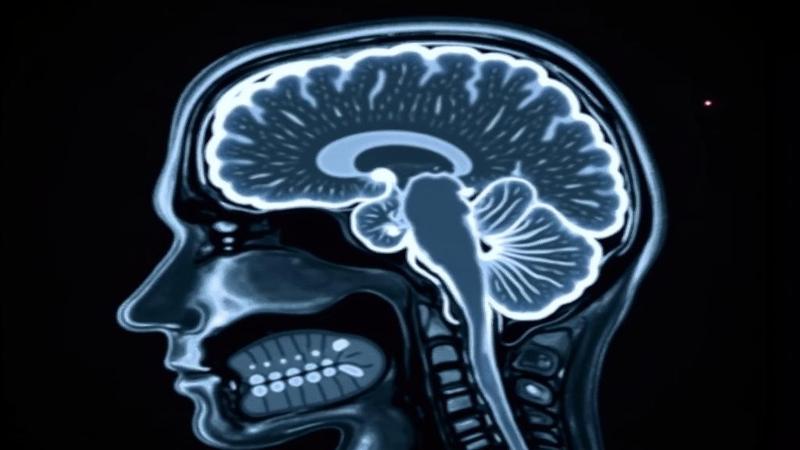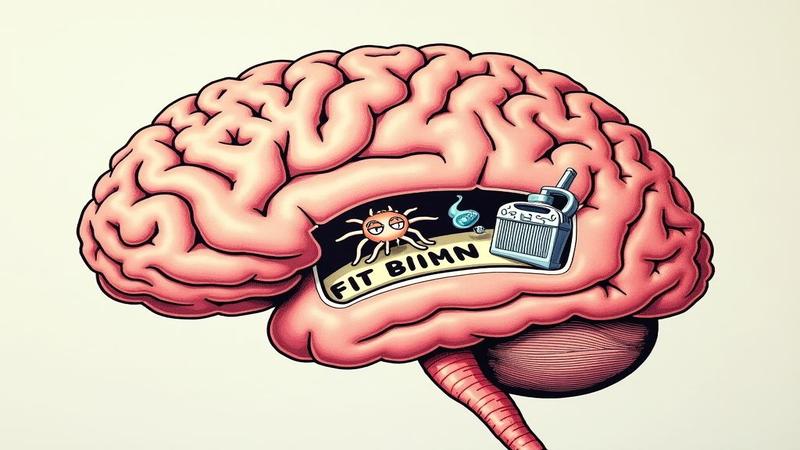Scientists Find Brain Damage Hiding Behind Dementia, Claims It Was 'Just Visiting'

In a breakthrough that absolutely no one asked to find behind a medical diagnosis, scientists have discovered hidden brain damage skulking behind dementia like a tenant who never signed the lease but still eats the cheese. The damage reportedly hissed when exposed to light and denied knowing who left the sticky note that says ‘Your keys are in the freezer.’
The research team described the finding as opening a cupboard labeled ‘Not My Problem’ and watching a small avalanche of misfolded proteins, unpaid attention bills, and the neuron equivalent of expired yogurt. ‘It’s not a smoking gun,’ said one scientist, ‘it’s a smoking labyrinth wearing a name tag that says Maybe.’
In classic evidence-first fashion, the investigators didn’t chase vibes, they chased data, like librarians sprinting after a runaway footnote. They used scans, autopsy tissues, and enough statistics to make a bar graph file for worker’s comp. The damage sat there the whole time like a background extra in a medical drama, waiting for its IMDb credit.
As a compassionate reminder: dementia remains a complex set of conditions, not a single villain twirling a mustache behind your hippocampus. Think ensemble cast—some plaques, a little vascular chaos, microglia doing Shakespearean asides, and a blood-brain barrier that forgot its bouncer training.
Naturally, the wellness cosmos parachuted into the press conference to sell hope in gummy form, claiming the newly discovered damage can be coaxed into better behavior with memory-boosting lion's mane gummies. The damage declined comment but did accept a complimentary tote bag and whispered it prefers coffee.
Meanwhile, the MRI images were reportedly so persuasive they received a standing ovation from the p-values. On closer inspection, the scans revealed a to-do list etched in cortical chalk: ‘1) Learn French. 2) Forget where you put French.’ Scientists agreed the handwriting looked suspiciously like Tuesday.

Pharmaceutical marketers, sensing a breeze of evidence, released an ad showing two grandparents doing parkour in slow motion while a voiceover calmly lists side effects including ‘remembering your student loans’ and ‘briefly understanding cryptocurrency.’ Please consult your doctor if your optimism lasts longer than a fiscal quarter.
For those asking what to do now, the boring miracle remains the same: protect your head, move your body, treat your blood pressure like it owes you money, sleep like it’s a union job, and talk to other humans even when the group chat is feral. If you must buy something, choose tools that measure rather than promise, like an FDA-cleared home EEG headband, and treat any product that says ‘miracle’ like a raccoon says ‘trust me.’
The scientists stressed nuance so hard the nuance asked for hazard pay. They noted that ‘hidden’ doesn’t mean ‘instantly fixable with kale confetti,’ and ‘behind’ doesn’t mean ‘you can bribe it with a charcuterie board.’ The guidance is realistic: fewer concussions, fewer strokes, more boring consistency, fewer self-appointed biohackers filming themselves beside a ring light.
Predictably, the crystal industrial complex announced a geode that repels dementia like a porch light repels moths. The lab tested it by placing the rock near a neuron, which promptly used it as a paperweight for a grant application.
I read the 48-page supplement so you don’t have to, and yes, the graphs are wearing belts and suspenders. The correction, politely delivered: this isn’t a plot twist that ends the story; it’s a clue that helps us stop acting like the villain is ‘aging’ when the actual suspects are treatable risks and policies you can vote on.
In conclusion, scientists found brain damage hiding behind dementia the way your remote hides behind the couch: patiently, smugly, surrounded by lint and an old almond. After years of searching, the team finally grabbed it by the ankle, and it said the same thing your remote does when you retrieve it—’You’re welcome.’
